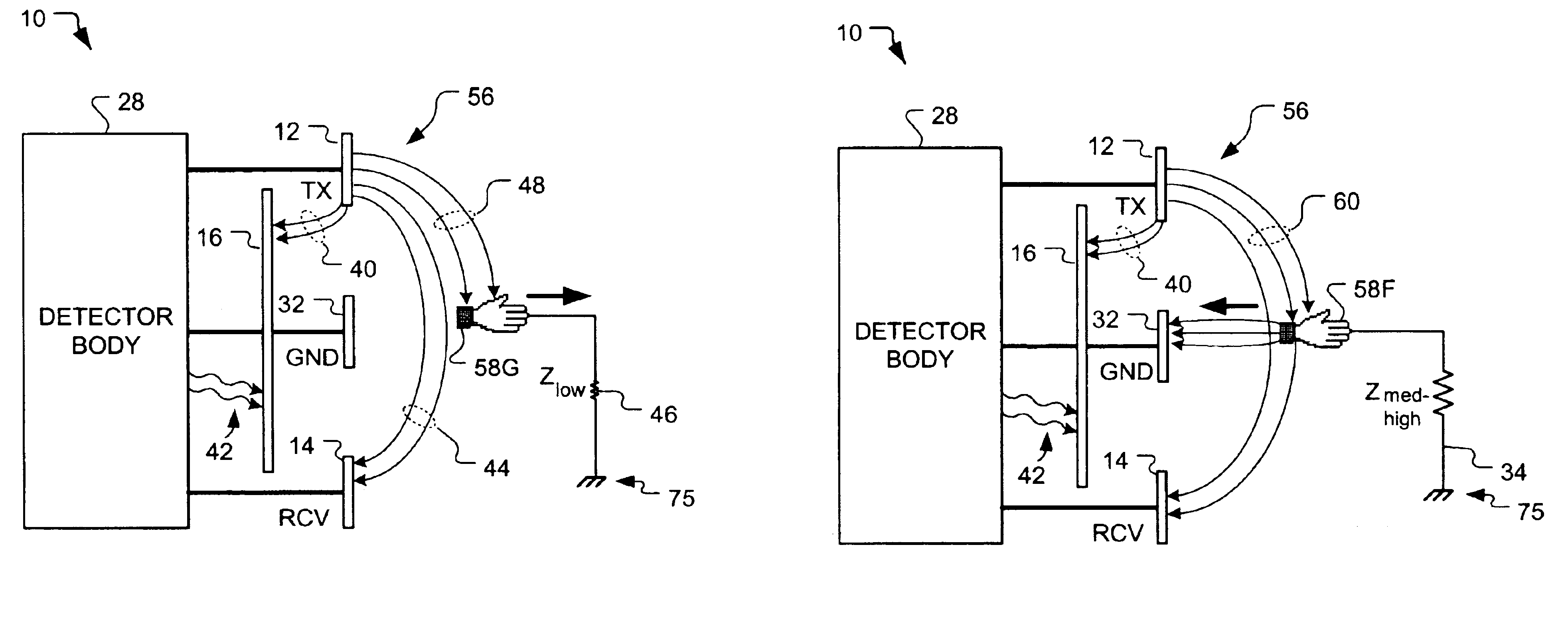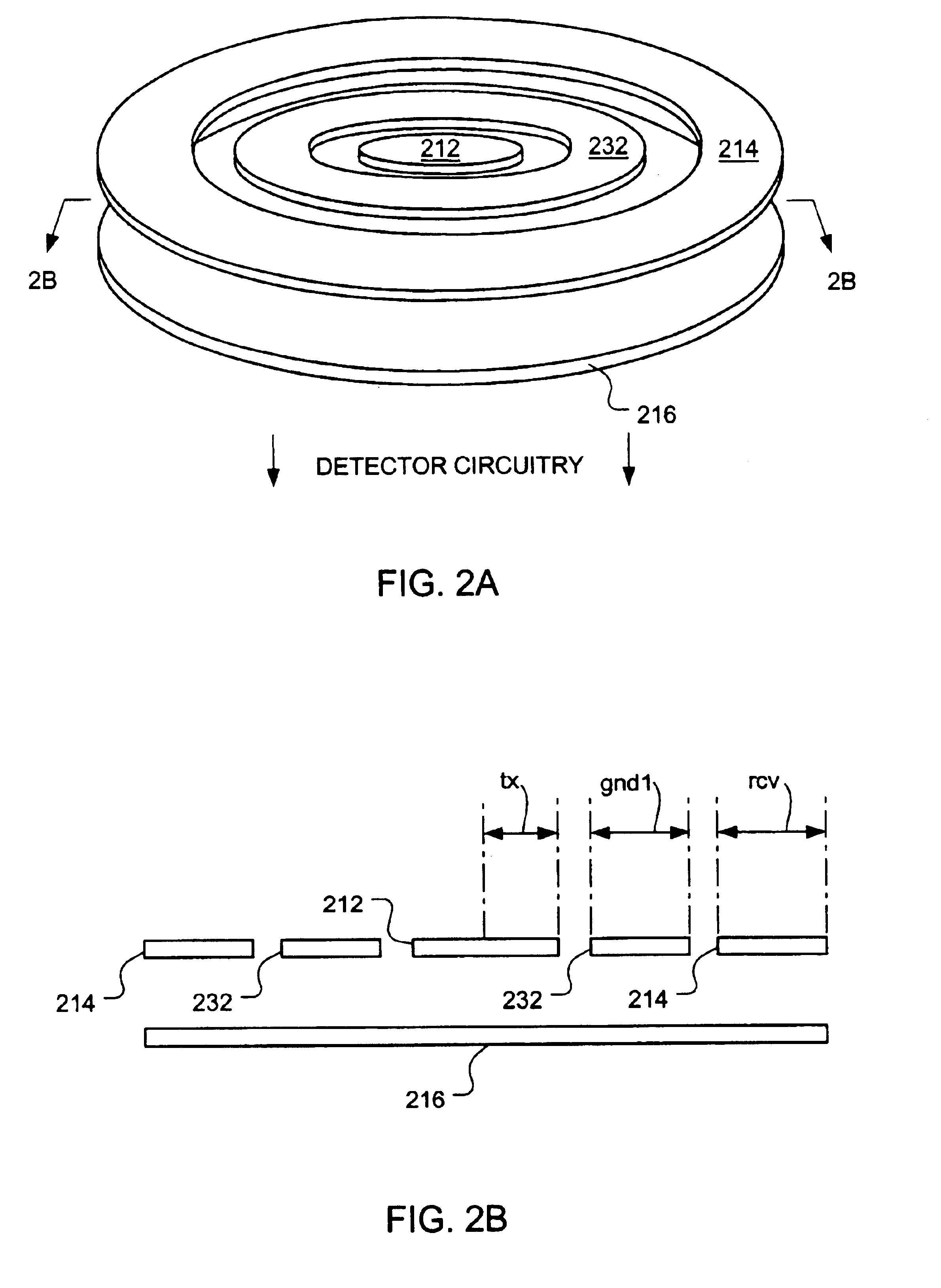Electric field proximity detector for floating and grounded targets
a technology of proximity detector and floating ground, applied in the direction of mechanical vibration actuation of burglar alarms, instruments, pulse techniques, etc., can solve the problems of inability of these devices to reliably sense objects with intermediate degrees of ground impedance, and add to the complexity of detector circuitry
- Summary
- Abstract
- Description
- Claims
- Application Information
AI Technical Summary
Benefits of technology
Problems solved by technology
Method used
Image
Examples
Embodiment Construction
With reference to the schematic diagram of FIG. 1, a proximity detector 10 has a sensor 20 coupled to a detector body 28. The sensor 20 comprises a transmitting electrode 12, a receiving electrode 14, a first ground electrode 32 and a second ground electrode 16. The ground electrodes 32 and 16 are electrically coupled to one another but are electrically insulated from both the transmitting electrode 12 and the receiving electrode 14. The actual position and sizing of the electrodes is described hereinafter.
Detector body 28 houses electronic circuitry including an oscillator 18, an amplifier 22, and preferably, a signal detector 24. The oscillator 18 consists of a low-frequency alternating current (“AC”) signal generator. The output of oscillator 18 is electrically coupled to the transmitting electrode 12. The ground electrodes 32 and 16 are electrically coupled to the circuit ground 70 of the detector circuitry. It should be noted that circuit ground 70 may in fact be distinct from ...
PUM
 Login to View More
Login to View More Abstract
Description
Claims
Application Information
 Login to View More
Login to View More - R&D
- Intellectual Property
- Life Sciences
- Materials
- Tech Scout
- Unparalleled Data Quality
- Higher Quality Content
- 60% Fewer Hallucinations
Browse by: Latest US Patents, China's latest patents, Technical Efficacy Thesaurus, Application Domain, Technology Topic, Popular Technical Reports.
© 2025 PatSnap. All rights reserved.Legal|Privacy policy|Modern Slavery Act Transparency Statement|Sitemap|About US| Contact US: help@patsnap.com



